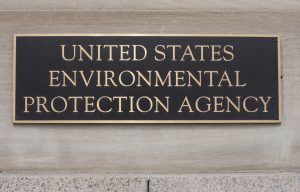 Insurers have recently argued that environmental property damage claims for “closure” costs arising out of historic pollution are not covered, because the claimed damages are just “ordinary costs of doing business.” Policyholders should strongly resist denials based on this argument, which is unsupported custom and practice in the insurance industry and contradicts the terms of standard-form third-party liability policies, applicable environmental laws, and insurance law in nearly all jurisdictions.
Insurers have recently argued that environmental property damage claims for “closure” costs arising out of historic pollution are not covered, because the claimed damages are just “ordinary costs of doing business.” Policyholders should strongly resist denials based on this argument, which is unsupported custom and practice in the insurance industry and contradicts the terms of standard-form third-party liability policies, applicable environmental laws, and insurance law in nearly all jurisdictions.
Articles Tagged with CERCLA
A “Suit” by Any Other Name: Ninth Circuit Rules CERCLA 104(e) Letter Triggers Duty to Defend
Recently, we wrote about the breadth of the “duty to defend,” and its importance to policyholders. As if on cue, late last week the Ninth Circuit Court of Appeals confirmed in Ash Grove Cement Company v. Liberty Mutual Insurance Company that, under Oregon law, an insurer’s duty to defend begins with an information request from the Environmental Protection Agency, and continues for the duration of the regulatory process.  The particular information request at issue in Ash Grove Cement is known as a “104(e) letter,” which is issued by the EPA under section 104(e) of the Comprehensive Environmental Response, Compensation and Liability Act of 1980 (CERCLA). As companies that have owned or operated a contaminated site know from experience, a 104(e) letter or a similar request under state environmental law typically is the first step in a regulatory enforcement process under which they face strict and retroactive liability for the costs of investigating and cleaning up the site. The ruling in Ash Grove Cement means that defense cost coverage begins at this critical juncture and continues until site investigation and cleanup is completed.
The particular information request at issue in Ash Grove Cement is known as a “104(e) letter,” which is issued by the EPA under section 104(e) of the Comprehensive Environmental Response, Compensation and Liability Act of 1980 (CERCLA). As companies that have owned or operated a contaminated site know from experience, a 104(e) letter or a similar request under state environmental law typically is the first step in a regulatory enforcement process under which they face strict and retroactive liability for the costs of investigating and cleaning up the site. The ruling in Ash Grove Cement means that defense cost coverage begins at this critical juncture and continues until site investigation and cleanup is completed.
 Policyholder Pulse
Policyholder Pulse


